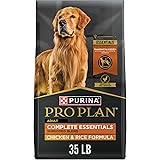Sustainable Practices for Reducing Your Pet’s Environmental Paw Print
How can pet owners minimize their furry friend’s impact on the environment while still providing optimal care and companionship?
In today’s world, environmental consciousness is more important than ever. As pet owners, we cherish the companionship and joy our furry friends bring into our lives, but we also recognize the need to minimize their ecological footprint. From reducing waste to choosing sustainable products, there are various ways we can practice eco-friendly pet ownership without compromising the well-being of our beloved animals. Join us as we explore sustainable practices for reducing your pet’s environmental paw print while still ensuring they receive the care and companionship they deserve.
Choosing Eco-Friendly Pet Products
In recent years, there has been a growing demand for eco-friendly pet products that minimize environmental impact without compromising the health and well-being of our furry friends. Here, we delve deeper into sustainable alternatives for various pet products, offering practical solutions for reducing your pet’s environmental paw print.
Biodegradable Poop Bags:
BarkBox - Monthly Dog Subscription Box
Get your puppy the best toys and treats delivered monthly! BarkBox offers premium dog toys, treats, and chews that are perfect for growing puppies. Each box is curated by experts and includes 2 toys, 2 bags of treats, and a chew.
Amazon Puppy Essentials
Everything you need for your new puppy in one place. From crates and beds to food bowls and training pads, Amazon has all the essentials at great prices with fast shipping.
- Traditional plastic poop bags contribute to landfill waste and pollution. Biodegradable poop bags, made from plant-based materials such as cornstarch or recycled materials, offer a more eco-friendly solution. These bags break down naturally over time, reducing the environmental burden associated with pet waste disposal.
Eco-Friendly Cat Litter:
- Conventional clay-based cat litter poses environmental concerns due to its non-biodegradable nature and the energy-intensive process of mining and processing clay. Eco-friendly alternatives include litter made from natural materials such as recycled paper, wood shavings, or plant-based fibers like wheat or corn. These litters are biodegradable and often come in compostable packaging, further reducing environmental impact.
Natural Grooming Products:
- Many pet grooming products contain harsh chemicals and synthetic ingredients that can harm both pets and the environment. Opting for natural grooming products made from organic, plant-based ingredients is a safer and more sustainable choice. Look for shampoos, conditioners, and grooming sprays that are free from parabens, sulfates, and artificial fragrances, and packaged in recyclable or biodegradable containers.
Durable and Sustainable Toys:
- Traditional pet toys are often made from plastic or other non-biodegradable materials, contributing to plastic pollution. Instead, choose toys made from sustainable materials such as natural rubber, hemp, bamboo, or recycled materials. These toys are not only safer for the environment but also tend to be more durable, reducing the need for frequent replacements.
Environmentally Friendly Pet Beds:
- When it comes to pet bedding, opt for options made from sustainable materials such as organic cotton, hemp, or bamboo. These materials are renewable, biodegradable, and often free from harmful chemicals found in conventional pet beds. Additionally, look for beds with removable, washable covers to prolong their lifespan and reduce waste.
By incorporating these sustainable alternatives into your pet care routine, you can minimize your pet’s environmental paw print while promoting a healthier planet for all living beings.
Reducing Waste Through Responsible Pet Ownership
As responsible pet owners, it’s essential to consider the environmental impact of our furry companions and take steps to minimize waste in our daily pet care routines. Here are some strategies for reducing waste associated with pet ownership:
Composting Pet Waste:
- Instead of disposing of pet waste in the trash, consider composting it to divert it from landfills and turn it into nutrient-rich fertilizer for your garden. Use a dedicated pet waste composting system or designate a small area in your backyard for pet waste composting. Be sure to research proper composting techniques to ensure safety and effectiveness.
Bulk Purchasing and Minimal Packaging:
- Reduce packaging waste by buying pet supplies such as food, treats, and litter in bulk whenever possible. Look for brands that offer larger quantities or use minimal packaging, such as recyclable or compostable bags. Buying in bulk not only reduces waste but also saves money in the long run and reduces the frequency of trips to the store.
DIY Pet Toys and Accessories:
- Get creative and make your own pet toys, bedding, and accessories from repurposed or recycled materials. For example, old t-shirts or towels can be transformed into chew toys or pet bedding, while cardboard boxes can be turned into makeshift scratching posts or hideaways for cats. DIY projects not only reduce waste but also allow you to customize items to suit your pet’s preferences.
Minimalist Grooming and Cleaning Products:
- Streamline your grooming routine by using multipurpose or natural cleaning products that are safe for both your pet and the environment. Look for products with minimal packaging and biodegradable or refillable options. Consider reducing the frequency of baths and grooming sessions to conserve water and reduce the use of grooming products overall.
Donate or Upcycle Unused Items:
- Instead of throwing away gently used pet supplies or accessories that your pet has outgrown or no longer uses, consider donating them to local animal shelters, rescue organizations, or pet foster homes. Alternatively, repurpose or upcycle items into new products or donate them to DIY enthusiasts who can give them a second life.
By adopting these waste-reducing practices into your pet care routine, you can minimize your environmental impact while providing the best care for your furry friend. Together, we can work towards a more sustainable future for pets and the planet.
Opting for Sustainable Diets
Dietary choices for pets can have a significant impact on the environment, as well as on their health and well-being. Here are some ways to reduce your pet’s environmental paw print through sustainable diet options:
Plant-Based and Insect-Based Diets:
- Traditional meat-based diets for pets can have a high carbon footprint due to the resource-intensive nature of meat production. Consider exploring plant-based or insect-based diet options for your pets, which have a lower environmental impact. Plant-based diets for dogs and cats are formulated to provide complete and balanced nutrition without the need for animal-derived ingredients. Insect-based diets, which use insects such as crickets or mealworms as protein sources, offer another sustainable alternative that is rich in essential nutrients.
Homemade and Raw Diets:
- Making homemade pet food or feeding a raw diet allows you to have more control over the ingredients and sourcing of your pet’s food. By using locally sourced, organic ingredients and reducing packaging waste, homemade and raw diets can be more environmentally friendly than commercial pet foods. However, it’s important to consult with a veterinarian or veterinary nutritionist to ensure that homemade diets meet your pet’s nutritional needs.
Choosing Sustainable Protein Sources:
- If you prefer to feed your pet a meat-based diet, opt for sustainable protein sources such as humanely raised, grass-fed, or pasture-raised meats. Look for pet food brands that prioritize ethical sourcing practices and use ingredients from sustainable sources. Additionally, consider supporting companies that participate in initiatives such as carbon offset programs or use eco-friendly packaging.
Reducing Food Waste:
- Minimize food waste by purchasing pet food in appropriate quantities and storing it properly to maintain freshness. Avoid overfeeding your pet and monitor their portion sizes to reduce excess food consumption. If you have leftover food that your pet won’t eat, consider donating it to local animal shelters or food banks instead of throwing it away.
Supporting Sustainable Brands and Initiatives:
- Research pet food brands that prioritize sustainability and environmental stewardship in their production practices. Look for certifications such as organic, non-GMO, or eco-friendly labels that indicate a commitment to sustainability. Additionally, support companies that invest in eco-friendly packaging, renewable energy, or carbon offset programs to reduce their environmental impact.
By choosing sustainable diet options for your pet, you can reduce their environmental paw print while promoting their health and well-being. Whether you opt for plant-based diets, homemade meals, or ethically sourced meats, every small change can make a positive difference for the planet and future generations.
Embracing DIY and Upcycling
Getting creative with do-it-yourself (DIY) projects and upcycling can not only reduce waste but also provide enriching experiences for both you and your pet. Here’s how you can embrace DIY and upcycling to minimize your pet’s environmental paw print:
Homemade Toys and Enrichment Activities:
- Create engaging toys and enrichment activities for your pet using household items or repurposed materials. For example, you can make puzzle feeders from empty cardboard boxes, DIY tug toys from old t-shirts, or sensory bins filled with natural materials like dried leaves or pinecones. These homemade toys and activities stimulate your pet’s mind and senses while reducing the need for store-bought toys.
Repurposed Pet Accessories:
- Give old or unused items a new lease on life by repurposing them into pet accessories. Transform old blankets or sweaters into cozy pet beds, repurpose storage containers into litter box enclosures, or turn unused furniture into scratching posts or climbing structures for cats. Upcycling allows you to personalize your pet’s accessories while minimizing waste and saving money.
DIY Grooming and Healthcare Products:
- Make your own grooming and healthcare products for your pet using natural ingredients and simple recipes. DIY options include homemade pet shampoo, paw balms, flea repellents, and toothpaste. By using natural, non-toxic ingredients, you can avoid harsh chemicals found in commercial products and reduce packaging waste.
Reusable and Recycled Materials:
- Choose reusable and recycled materials whenever possible for pet-related projects and accessories. For example, opt for washable fabric toys instead of disposable ones, use recycled paper or cardboard for DIY projects, and repurpose old containers or jars for storing pet supplies. By reducing reliance on single-use plastics and disposable items, you can minimize your pet’s environmental impact.
Community and Collaboration:
- Get involved in DIY and upcycling communities to share ideas, inspiration, and resources with fellow pet owners. Participate in local pet-related events, workshops, or online forums where you can exchange tips, collaborate on projects, and support each other’s efforts to minimize waste and promote sustainability in pet ownership.
By embracing DIY and upcycling, you can unleash your creativity, strengthen your bond with your pet, and contribute to a more sustainable future for both your furry friend and the planet. With a little imagination and ingenuity, the possibilities for reducing your pet’s environmental paw print are endless.
Reducing Carbon Footprint in Transportation
Minimizing the environmental impact of transportation is essential for pet owners looking to reduce their carbon footprint. Here are some strategies for reducing the carbon emissions associated with pet travel:
Public Transportation and Carpooling:
- Whenever possible, opt for public transportation or carpooling when traveling with your pet. Public transit, such as buses or trains, often has lower carbon emissions per passenger mile compared to individual car travel. Carpooling with other pet owners or coordinating rideshare services can further reduce the number of vehicles on the road and decrease overall emissions.
Walking and Biking:
- Choose active modes of transportation such as walking or biking for short-distance trips with your pet. Walking or biking not only reduces carbon emissions but also provides opportunities for exercise and bonding with your furry friend. Invest in pet carriers, strollers, or bicycle trailers designed for safe and comfortable pet transport during these activities.
Fuel-Efficient Vehicles:
- If driving is necessary, opt for fuel-efficient vehicles with lower emissions to minimize your carbon footprint. Choose vehicles with high fuel economy ratings, hybrid or electric options, or alternative fuel sources such as compressed natural gas or biodiesel. Consider the size and weight of your vehicle relative to your pet’s transportation needs to ensure optimal efficiency.
Route Planning and Vehicle Maintenance:
- Plan your pet-related trips strategically to minimize driving distances and optimize fuel efficiency. Use GPS or route-planning apps to identify the most direct and eco-friendly routes, avoiding traffic congestion and unnecessary idling whenever possible. Additionally, maintain your vehicle regularly by keeping tires properly inflated, performing scheduled maintenance, and adhering to eco-friendly driving practices such as gentle acceleration and braking.
Offsetting Carbon Emissions:
- Consider offsetting the carbon emissions associated with your pet’s transportation by participating in carbon offset programs or supporting initiatives that promote renewable energy or reforestation efforts. Carbon offset projects invest in activities that capture or reduce greenhouse gas emissions, such as tree planting, renewable energy development, or methane capture from landfills.
By implementing these strategies, pet owners can minimize the environmental impact of transportation while ensuring safe and responsible pet travel. By choosing eco-friendly transportation options and adopting sustainable practices, pet owners can contribute to a healthier planet for both pets and humans alike.
In conclusion, implementing sustainable practices to reduce your pet’s environmental paw print is not only beneficial for the planet but also for the health and well-being of your furry companions. By incorporating eco-friendly habits into various aspects of pet care, from diet and waste management to transportation and lifestyle choices, pet owners can make a significant positive impact on the environment.
Through sustainable diet choices, such as opting for plant-based or locally sourced ingredients, pet owners can minimize the carbon footprint associated with pet food production while promoting animal welfare and health. Embracing DIY projects and upcycling allows for creative solutions to pet-related needs while reducing waste and reliance on single-use plastics. Mindful waste management practices, including composting pet waste and recycling packaging materials, help divert waste from landfills and minimize pollution.
Choosing eco-friendly transportation options, such as walking, biking, or carpooling, reduces carbon emissions associated with pet travel and promotes a healthier lifestyle for both pets and owners. Additionally, offsetting carbon emissions through participation in carbon offset programs or supporting renewable energy initiatives can further mitigate the environmental impact of pet ownership.
By adopting these sustainable practices, pet owners can not only reduce their pet’s environmental paw print but also inspire others to make positive changes for the planet. Together, we can create a more sustainable future where pets and humans can thrive in harmony with the natural world.
Auto Amazon Links: No products found.








